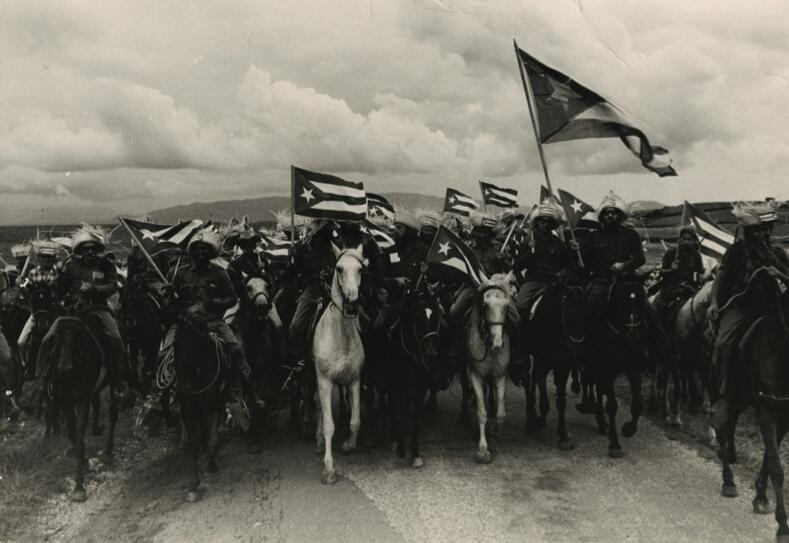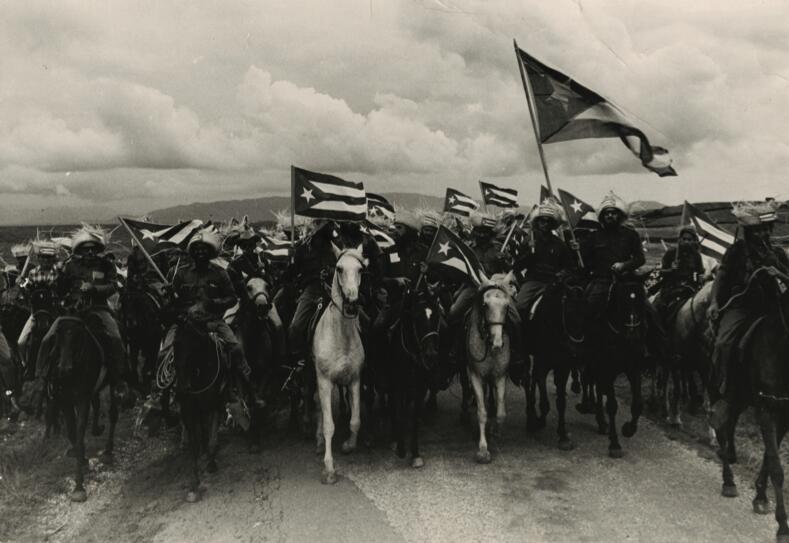“Cuba en Revolución” at the International Center of Photopgraphy
The exhibition Cuba in Revolution, at the International Center of Photography covers the development of Cuban photography from the early 1950s until 1968, a period that positioned the works of indigenous photographers Korda, Corrales, Constantino Arias, Osvaldo Salas—alongside the images taken during this time in the island by international renounced photographers and photojournalists such as Cartier-Bresson, Rene Burri, Burt Glinn, Elliott Erwitt, and Flip Schulke.

Among the outstanding photographs in this collection of vintage prints are Alberto Korda’s famous 1960 portrait of Che Guevara and never-before-seen images of Che’s death in Bolivia in 1967.
During the Revolution, iconographic images of the Revolutionary leaders related to the cult of the personality proliferated. Initially, both domestic and foreign photographers had unprecedented access to Fidel Castro and his youthful cohorts, and many of the photographs that were taken at this time capture the daily life in the island.
Also included in the show are rarely seen photographs depicting the counterculture of the 1960s that existed clandestinely alongside the authorized youth movements of the Revolution. After 1968 and the banning of private enterprise inside Cuba, most authorized photographs of the Revolution were limited to portraits of Castro in his official capacity as head of the Cuban state.
The co-curators are ICP Chief Curator Brian Wallis and Guest Curator Mark Sanders. Cuba in Revolution is organized by the International Center of Photography in association with The International Art Heritage Foundation. The exhibition shows the tremendous influence of photography in Cuba.
Cuba in Revolution, at the International Center of Photography (1133 Avenue of the Americas at 43rd Street, New York) from September 24, 2010 through January 9, 2011.




